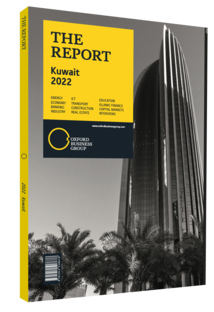Rising oil prices catalysing investment in alternative energy in GCC
After opening 2022 at around $78 per barrel, Brent crude prices rose sharply over the next few months to surpass $127 on March 8 – the highest price in 14 years, driven in part by Russia’s invasion of Ukraine. Prices remained elevated throughout much of the year, although they had returned to early January levels by early December amid growing fears of a global recession and weakening demand. The US Energy Information Administration estimated that month that the average Brent crude price for the year would be $104.48 per barrel, falling to $92.36 in 2023 – which would still be the second-highest rate since 2014.
Although investment in oil and gas dropped by about 30% between the start of the Covid-19 pandemic in early 2020 and early 2022, there are signs of a reversal of that trend. Carbon Tracker, a London-based climate change-focused think tank, noted in January 2022 that higher oil prices may encourage energy companies to invest in new exploration and production projects.
Indeed, in February 2022 US energy giant ExxonMobil announced a 45% increase in its budget for drilling and other activities that year. At the same time, there are concerns that elevated oil prices could incentivise the consumption of coal, which reached an all-time high in 2021 and is on track to reach even higher levels in 2022, according to the International Energy Agency.
Boon for Renewables
Rather than directly challenging renewables and slowing the energy transition, many industry analysts believe that the high oil prices in 2022 could lead governments and oil majors to increase their investment in alternative energy. For example, in September 2021 French energy giant TotalEnergies said it would take advantage of high oil prices to buy back $1.5bn in shares to boost investment in renewable sources. Meanwhile, in February 2022 UK-based BP – upon announcing its highest annual profit registered in eight years at $12.8bn in 2021 – stated it would increase spending on low-carbon energy to 40% of total expenditure by 2025 and 50% by 2030.
Greener Future
Many Gulf countries have identified the development of renewable energy as key to their long-term economic diversification plans. For example, Saudi Arabia aims to generate 50% of its electricity from renewables by 2030, setting a net-zero target of 2060. To meet these goals, in December 2021 the government announced that it would invest SR380bn ($101.3bn) in renewable energy production by 2030. In April 2021 it inaugurated the Sakaka solar power plant, the country’s first utility-scale renewables project.
Meanwhile, in October 2021 the UAE pledged to invest Dh600bn ($163.4bn) in renewables by 2050, at which point it hopes to achieve net-zero emissions. The announcement came just a few weeks after the inauguration of the first stage of the Mohammed bin Rashid Al Maktoum Solar Park in Dubai. The park is expected to have a capacity of 5 GW by 2030.
Elsewhere in the region, Kuwait is targeting a 15% share of renewables by 2030. Although progress in expanding renewable capacity has been slow in recent years, there are indications that the government is trying to expedite progress following the completion of the first phase of the Al Shagaya renewable energy park in 2019. The subsequent three phases are expected to bring total capacity from multiple renewable sources at the park to 4 GW by 2030. Public money has been earmarked for the construction of the main conversion station at the park in FY 2022/23.
In January 2022 Oman inaugurated the 500-MW Ibri 2 solar field, the country’s largest utility-scale renewables project, while Qatar has also increased its focus on renewable energy. In October 2021 Qatar Petroleum changed its name to Qatar Energy, in order to reflect better the company’s renewables-focused strategy. Major projects include the 800-MW Al Kharsaah solar plant, which is located approximately 80 km west of the capital Doha. Once fully completed, the project will be the country’s largest renewable energy development. It is scheduled to be inaugurated sometime in 2022.
You have reached the limit of premium articles you can view for free.
Choose from the options below to purchase print or digital editions of our Reports. You can also purchase a website subscription giving you unlimited access to all of our Reports online for 12 months.
If you have already purchased this Report or have a website subscription, please login to continue.

